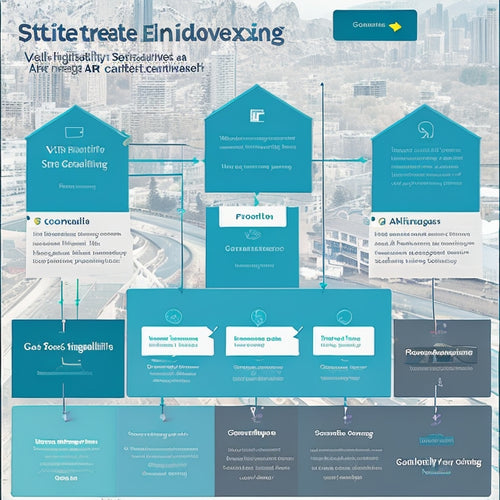
Wine Industry Adapts to Recycling Program Launch
Share
You're now part of a wine industry that's adjusting gears to comply with California's new recycling program, which demands significant changes to labeling, operations, and logistics. By July 1, 2025, you'll need to update your wine labels with the CRV message and factor in the 10-cent fee per sample or non-sale depletion. Wines bottled before January 1, 2024, are exempt, and stickers can be added to 2024 bottles. To guarantee a smooth shift, you'll want to streamline compliance and operations, and stay informed about the program's rules and regulations - and there's more to explore on how to make the most of this new program.
Key Takeaways
• The California Recycling Program (CRV) launches on July 1, 2025, with a 10-cent fee per sample or non-sale depletion.
• Wines bottled before January 1, 2024, are exempt from the CRV label rule, while 2024-bottled wines can use stickers for compliance.
• Wineries must update labels with the CRV message and implement operational changes to ensure accurate tracking and compliance.
• Out-of-state wineries must understand CRV requirements and update their shipping processes to include the fee and labeling for compliance.
• The CRV program aims to promote sustainability and encourages wineries to adopt environmentally friendly practices to benefit their business and the environment.
Program Implementation Essentials
As you start implementing the Beverage Container Recycling Program, it's important to grasp the essential details, including the deadline for label implementation, cost of the CRV program, and exemptions, to guarantee a smooth change.
Don't forget, the deadline for label implementation is July 1, 2025. You'll need to know that the cost of the CRV program is 10 cents per sample or non-sale depletion.
Also, wines bottled before January 1, 2024, are exempt from the label rule. But, if you have wines bottled in 2024 without the CRV message, you can add stickers to save the day (and some cash)!
Streamlining Compliance and Operations
You'll find it crucial to leverage tools like QuickBooks to streamline compliance and operations, guaranteeing accurate inventory tracking and sales channel reconciliation. By doing so, you'll be able to focus on what matters most - making great wine!
Here are some ways to boost operational efficiency:
-
Set up classes in QuickBooks to differentiate sales channels and identify re-sale sales from direct-to-consumer sales.
-
Reconcile bank accounts and cased goods inventory regularly to ensure accuracy.
-
Compile all sales and track inventory in QuickBooks to stay on top of your numbers.
- Record all samples and tasting room pours for accurate inventory tracking and compliance reporting.
California Recycling Program Details
To guarantee compliance with California's Beverage Container Recycling Program, you must understand the program's details, including implementation deadlines, cost structures, and labeling requirements.
By July 1, 2025, you'll need to implement the CRV label on your bottles. The program cost is 10 cents per sample or non-sale depletion, and wines bottled before January 1, 2024, are exempt from the label rule.
If you bottled wines in 2024 without the CRV message, you can add stickers to ensure correct redemption information. Don't forget about label exemptions and program requirements - it's essential to get it right.
If you're unsure, the compliance team or CalRecycle can provide guidance to help you navigate the program.
Impact on Out-of-State Wineries
If you're a winery outside California, you'll need to register with CalRecycle and comply with the program's regulations, as the CRV fee applies to all containers sold or transferred in California.
Don't worry, we've got you covered! Here are some key things to keep in mind:
-
Compliance requirements: Make sure you understand the program's rules and regulations to prevent any issues.
-
Shipping logistics: Update your shipping process to include the CRV fee and make sure you're complying with California's regulations.
-
Labeling and tracking: Keep track of your wine shipments and labeling to guarantee compliance with the program's requirements.
- Stay informed: Stay up-to-date on any changes to the program's rules and regulations to prevent any surprises.
Adapting to New Regulations
As the California Beverage Container Recycling Program takes effect, wineries must adjust to new regulations and implement necessary changes to avoid non-compliance penalties. You're probably wondering, 'What do I need to do to comply?' Don't fret, we've got you covered! Here's a quick rundown of the key changes:
| Regulation | Action Item | Deadline |
|---|---|---|
| Label adaptation | Update labels with CRV message | July 1, 2025 |
| CRV program expense | Include an additional 10 cents per sample or non-sale depletion | Ongoing |
| Exceptions | Wines bottled before Jan 1, 2024, are exempt | N/A |
To overcome operational challenges, concentrate on implementing sustainability initiatives that benefit your business and the environment. Stay tuned for more guidance on managing these changes and maximizing the program.
Frequently Asked Questions
Can I Use Existing Inventory Management Tools for CRV Tracking?
You're already using QuickBooks for inventory management, and guess what? It can also help with CRV tracking! Utilize its features for compliance, CRV reporting, and technology integration to simplify your recycling program process.
How Do I Handle CRV for Wine Sold to California Wholesalers?
You'll need to handle CRV for wine sold to California wholesalers by reporting and paying the fee for every bottle sold, or treating it as an overhead expense - either way, you've got this!
Are Wine Clubs and Subscription Services Subject to CRV Fees?
You're wondering if wine clubs and subscription services are subject to CRV fees? Yes, they are! You'll need compliance training to make sure you're charging and reporting correctly, so don't forget to factor those 10 cents per bottle into your pricing.
Can I Pass CRV Costs to Consumers Through Higher Wine Prices?
You're wondering if you can pass CRV costs to consumers through higher wine prices? Well, it's possible, but consider consumer awareness and your pricing strategy - will it hurt sales or boost your sustainability efforts amidst market competition?
Will Calrecycle Provide CRV Compliance Training for Winery Staff?
You'll be happy to know that CalRecycle offers CRV compliance training for your winery staff, so you can guarantee a smooth switch and avoid those pesky fines - it's time to get your team up to speed!
Related Posts
-
Optimizing Videos For Performance And Engagement In E-Commerce
In the rapidly evolving world of e-commerce, optimizing videos for performance and engagement has become essential fo...
-

What Drives Ecommerce Scalability in the Digital Age?
You're likely already aware that your ecommerce business needs to be scalable to stay competitive in today's digital ...
-

What Are the Benefits of Sitemaps for SEO
Sitemaps play a crucial role in search engine optimization (SEO) by enhancing website visibility and improving ranki...

